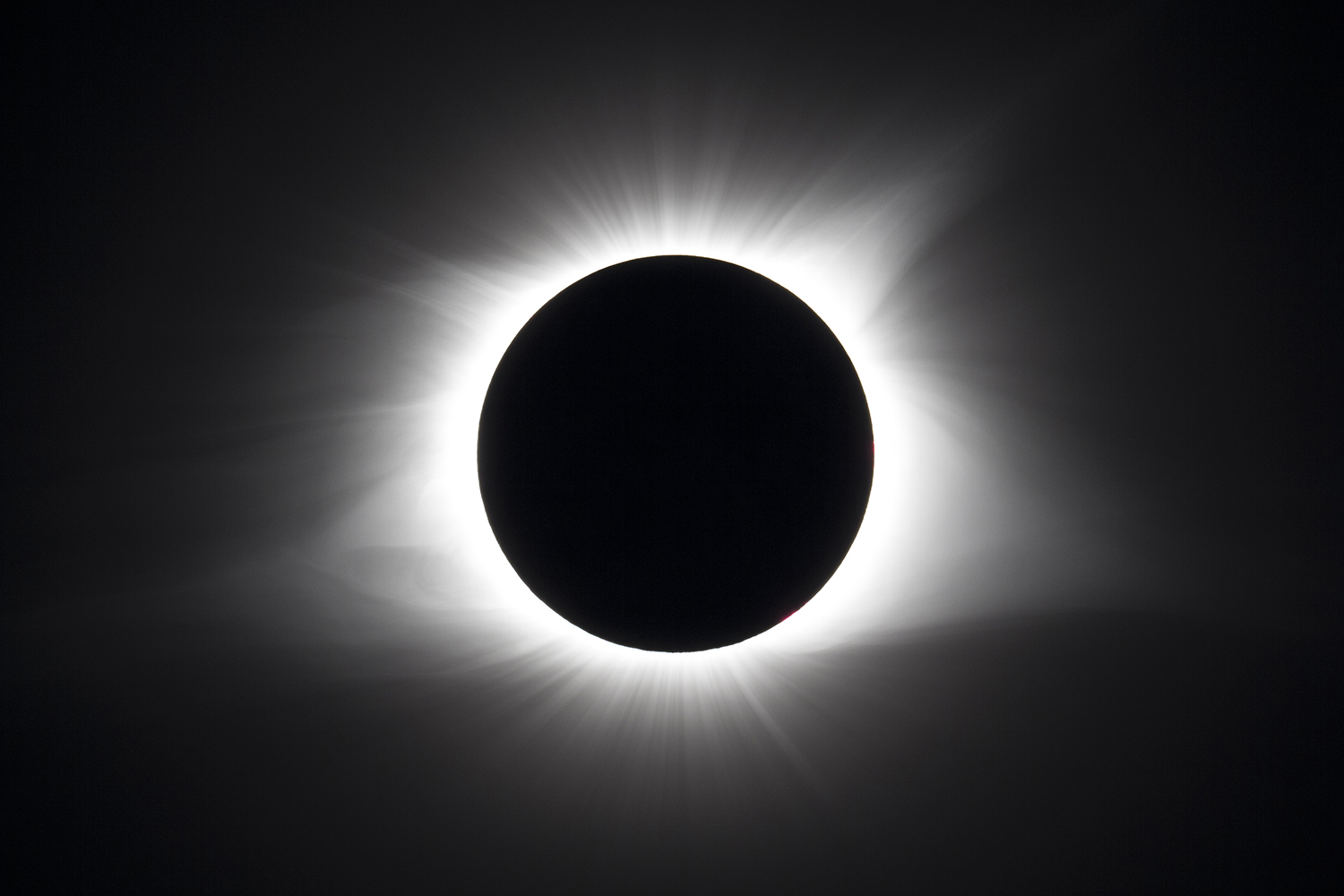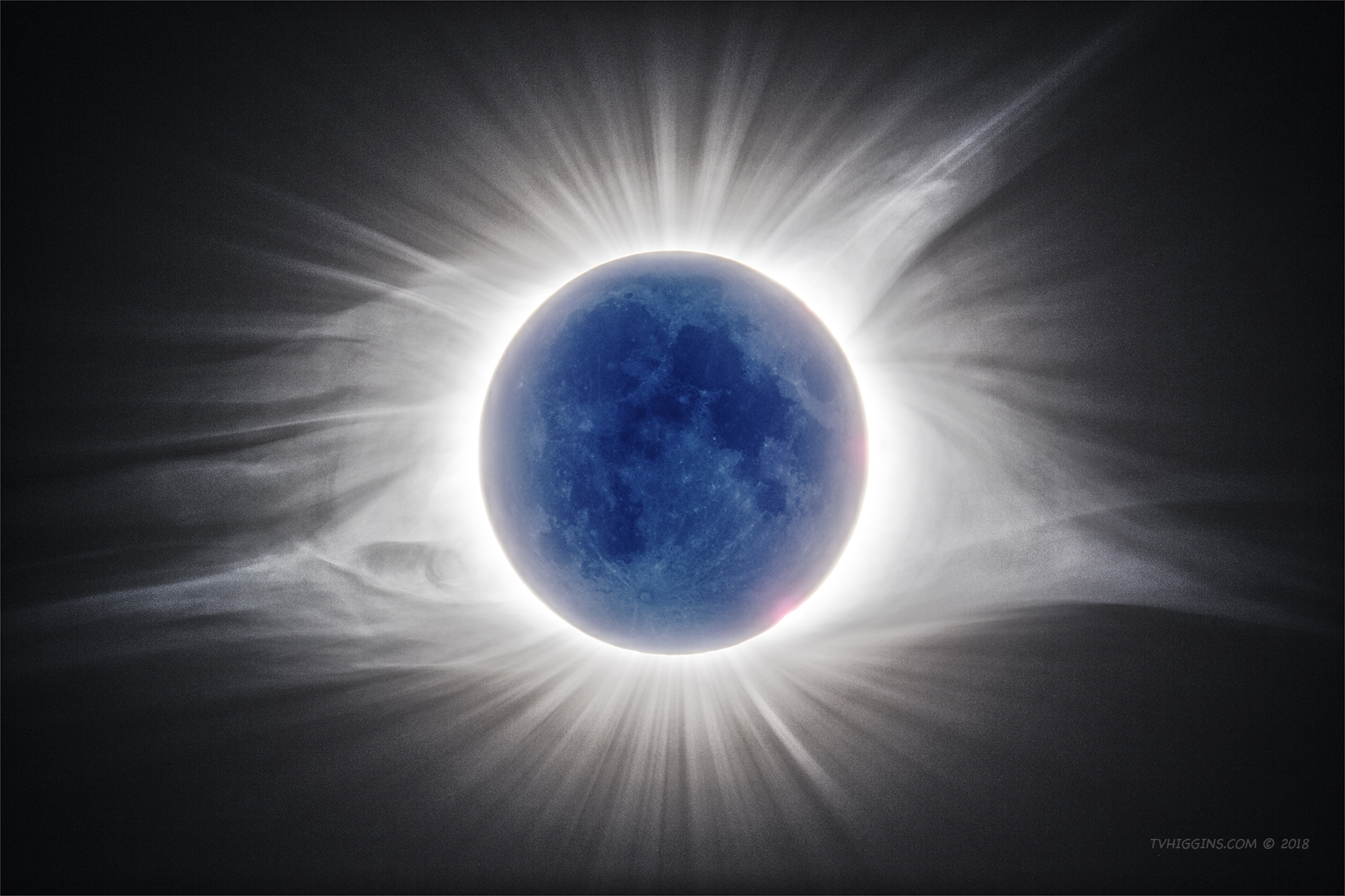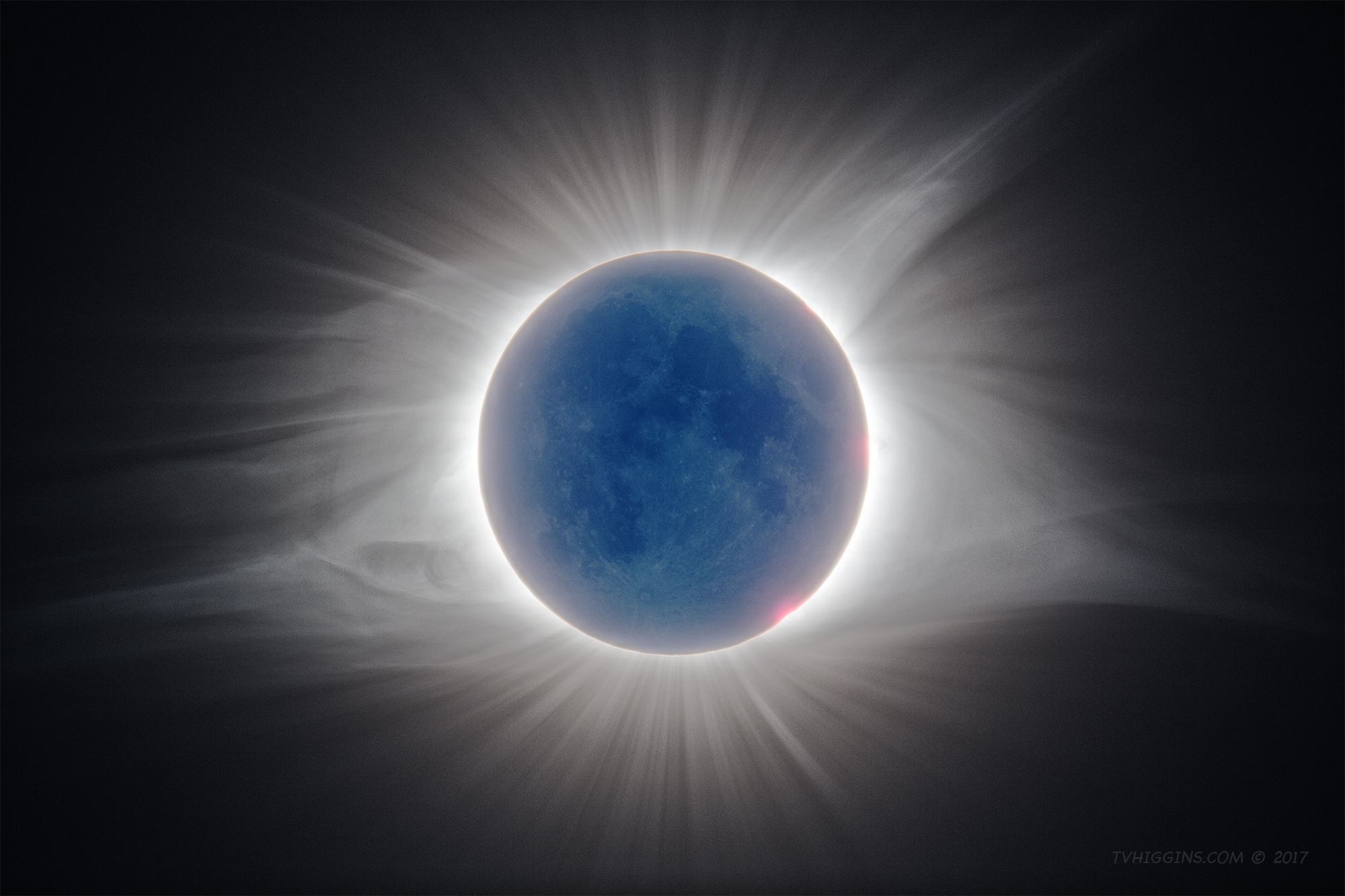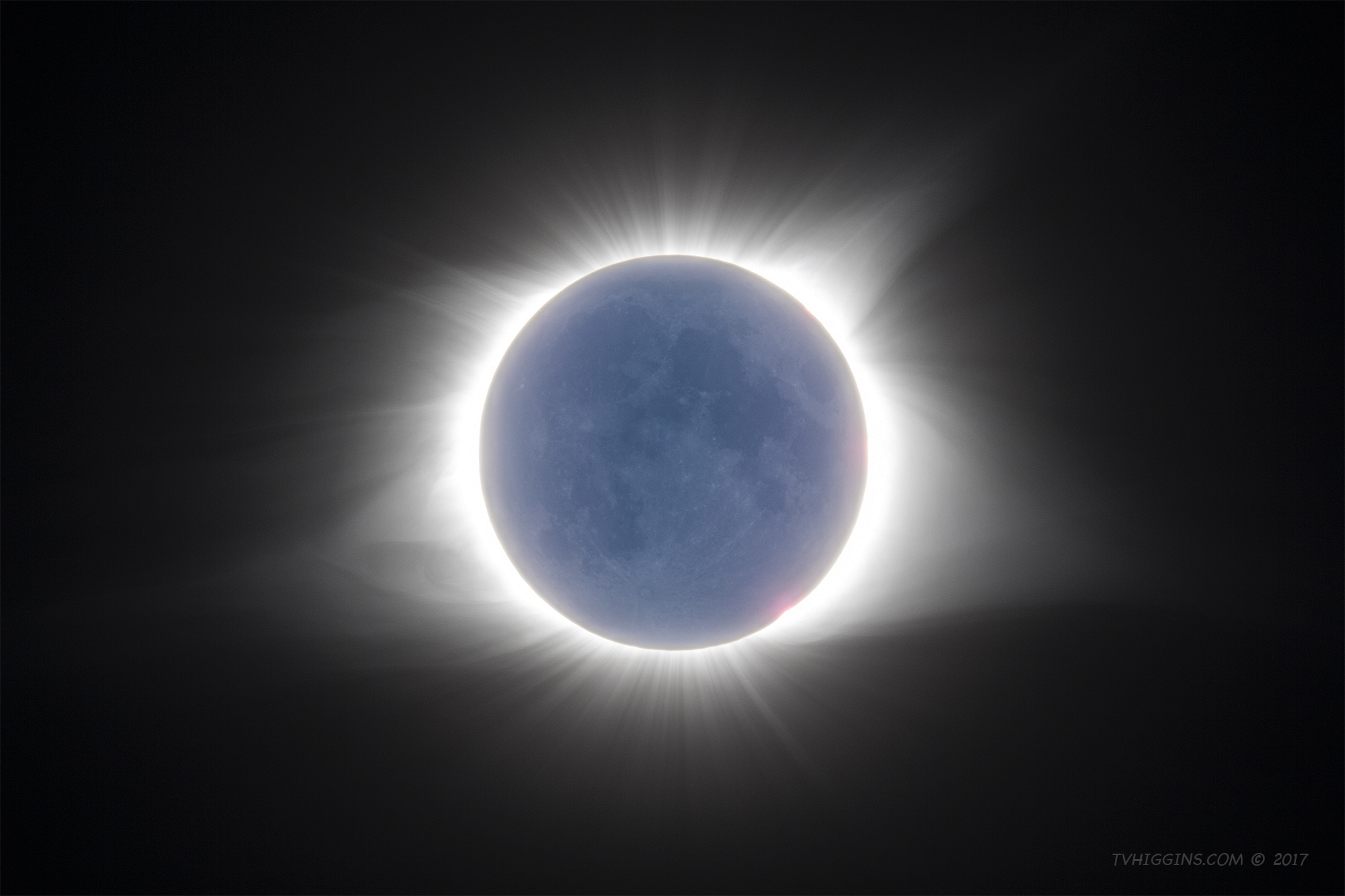Supervisual Photography
One of the greatest challenges of photographing the cosmos — and one of its greatest rewards — is to image objects that are difficult or impossible to see with just our eyes. Most astronomical objects are too dim, too far away, or too bright for us to visualize or photograph easily; and to meet these challenges, astronomers and imaging scientists have developed sophisticated techniques and technologies that extend photography well beyond the normal limits of human vision. This kind of photography I call supervisual photography.
To illustrate the power of supervisual photography, the slider above displays two of my images of the 2017 solar eclipse. The Visual Image closely resembles how the eclipse appeared to the eye during totality, while the Supervisual Image reveals details of the lunar surface and the solar corona that were present during totality but were far too dim to see. It’s important to note that the colors are natural and nothing was added or altered to create this extraordinary photo. Supervisual imaging techniques were applied during imaging and processing to tease out these existing features.
Supervisual imaging methods can also help bring to light deep-sky objects that are too dim to see at all. Such images can take hours or days to shoot before processing them. The resulting photos, however, are well worth the effort, revealing a kaleidoscope of colorful stars and vibrant, neon-like nebulae more breathtaking than anything that could be gleaned by the human eye through even the largest of telescopes.
Supervisual photography captures the jaw-dropping subtleties of the world that exists beyond our vision, a spectacular world that we otherwise could never see to appreciate.





